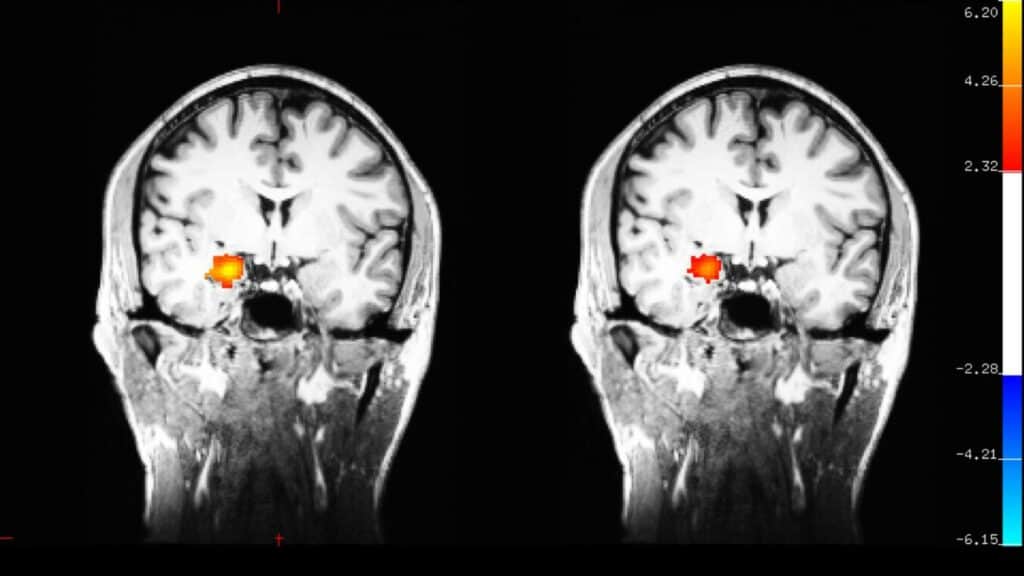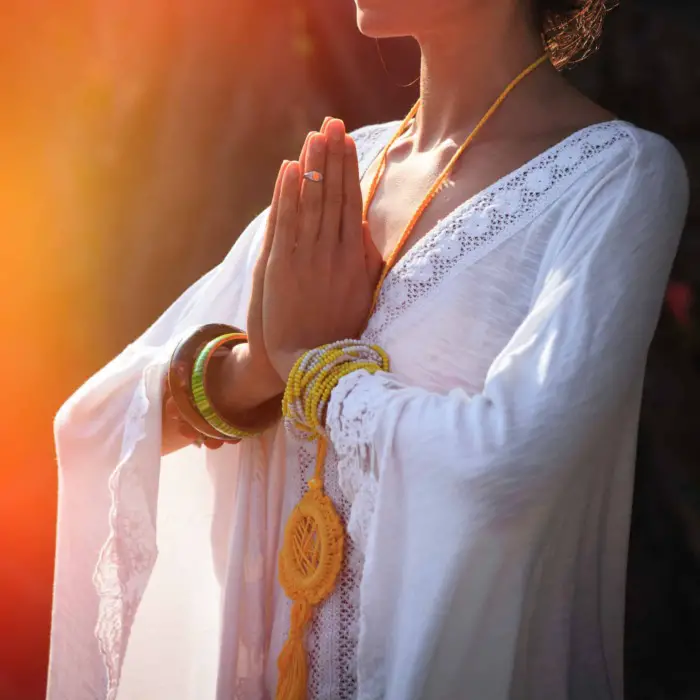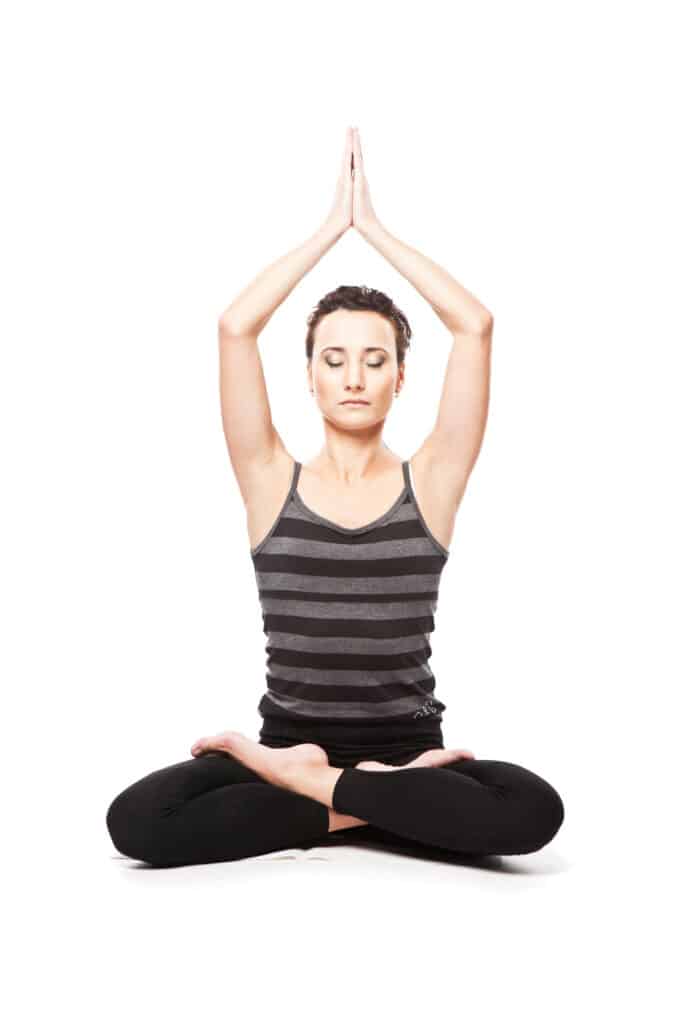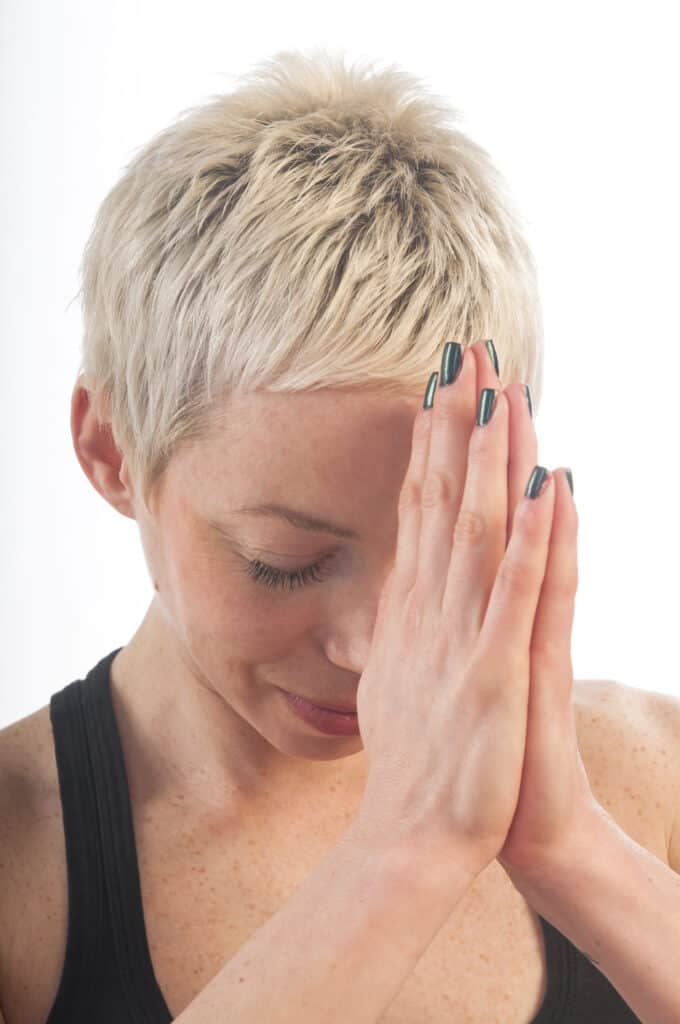Anjali mudra is probably, one of the most famous mudras in yoga.
Even when you come to a yoga class for the first time, chances are you will be doing this mudra. Also, the chances are that you won’t know about its meaning. So what is Anjali Mudra?
Anjali Mudra is a hand gesture used to open and close the yoga practice. It fits nicely into some asanas, for example, Mountain pose, Tree pose, or Warrior. You can also use it when you meditate or want to ground inside your body, mind, or intention.
Although it will depend on your yoga teacher, not all guys explain the sacred meaning of hand gestures. In any case, it’s better to be informed before you start doing it.
That’s why today we’ll explain some effects and provide tips on how to practice Anjali mudra.
How to Do Anjali Mudra?
This hand (hasta) mudra does not require any specific skills so that anyone can use it. But the effects of this practice are observed on different practice layers. Below we’ll explain how to perform the Anjali mudra and what to focus on during the practice.
On the physical side
Start in a standing (Tadasana) or seated (Sukhasana) position. Hold your palms in the middle of your chest and take several deep breaths. Try to feel how the fingertips touch each other gently, how the skin feels on your palms, and how warm or cold your hands are.
Your thumbs may touch the sternum (bone in the middle of your chest that connects your ribs).
Keep your hands and palms relaxed. You may even bend your palms a bit, creating space between them. Some yogis suggest that such a palms shape resembles a lotus flower that is about to open.
On the emotional level
Concentrate on your feelings and thoughts. Let your attention stay inside your heart center. Greet the inner energy of your heart and invite it to open and flow through your being.
Some students like to add a little bit of visualization to this practice. So, they picture some energy flowing with the breath through their heart and spine.
Indeed, it may be helpful when you’re feeling anxious or there are too many thoughts in your head. With time, you’ll be able to get into a state of concentration without any additional steps.
Anjali mudra helps seal your intention for the current yoga practice, whether you do asana sequences or just meditate. So, doing this hand mudra try to connect with the inner intention and contemplation.
What Does Anjali Mudra Represent?

In yoga and Eastern culture, hand mudras have several aspects of meaning. As your practice develops you may discover more deep meaning and understanding of the Anjali mudra.
The lexical meaning of the word “Anjali” refers to “offering” or “greeting”. So this gesture represents the greeting to a higher intention, a person or energy in you.
Another understanding is honoring the present moment and divine energy that flows through everything. It’s often taken as a gesture of gratitude or prayer. This mudra is also known as the Heart seal.
In some cases, the mudra can express the surrender of your ego to a higher self. Such a spiritual approach helps to develop the practitioner’s consciousness.
When Do You Use Anjali Mudra?
In yoga and Eastern culture, hand mudras have several aspects of meaning. As your practice advances, you may discover a deeper sense and understanding of the Anjali mudra.
The linguistic meaning of the word “Anjali” refers to “offering” or “greeting.” So this gesture represents the greeting to a higher intention, a person or energy in you.
Another understanding is honoring the present moment and divine energy that flows through everything. It’s often taken as a gesture of gratitude or prayer. This mudra is also known as the Heart seal.
In some cases, the mudra can express the surrender of your ego to a higher self. Such a spiritual approach helps to develop the practitioner’s consciousness.
What Are the Benefits of Anjali Mudra?
Improved Brain Activity
Holding left and right hand together exercises a better connection between the brain’s hemispheres. It builds more bonds between neurons, thus, promotes coordination, focus, and memory.

Neural activation through the palms’ skin influences the brain’s activity and helps to create a better connection between the physical body and the brain.
Decrease of Physical and Emotional Tension
Another benefit you can get from Anjali mudra is releasing tension in your palms, wrist, fingers, and even shoulders.
Not all people notice that during the day their hands become tense and rigid. This may be related to work performed during that day. Or this may be caused by emotions that reside in your body and its parts.
The practice of Anjali mudra combined with simple pranayamas helps calm down [2], root in your body, and find the center of balance inside you.
Energy Centers Activation
When we speak about yoga techniques, it’s hard to stick only to the physical and visible world. So, yes, mudra practice affects the chakras functioning in your spiritual body as well.
Although there is not much evidence about chakras and how they work, and the research [1] is still in progress, yoga followers admit that they feel energy “flows” and “centers” within their bodies. These sensations are often described as bubbles, champagne sparkles, warm or cold flows, excitement in certain areas, etc.

So for today’s article, we’d consider that chakras do exist. Moreover, they can be activated and used by a yogi to live life better.
Anjali mudra helps to open the Heart Chakra or Anahata. This, in turn, leads to activation of energy centers located higher, like Vishudha (throat center) or Ajna (energy center between eyebrows). The better energy flow from lower centers to upper ones allows yogis to stay youthful and active to live on their potential to the full.
Several Variations of Anjali Mudra
There is more than one option to exercise Anjali mudra. The most traditional way is to hold your palms in front of your heart center (middle of the ribcage). But there are a few more options:
Up above your head. This position is believed to connect you to the eternal consciousness or higher Self. It helps to gain new experiences during the meditation practice.

Right on the top of your head. This Anjali seal activates Crown chakra and awakens your spirit. Sometimes, it’s called Kailash mudra.
In front of your forehead. This way, Anjali mudra activates the third eye, intuition, and links your body with your spirit. On the physical level, regular practice of concentration on this area regulates the work of the pineal gland and balances the nervous system.

Next to your throat. The Throat center is liable for our voice and communication. So practicing Anjali mudra in front of your throat strengthens your throat and takes down the blocks located in this area.
References:
1) Clinical Trial on Specific Transcriptome Changes Associated with Blood Pressure Reduction in Hypertensive Patients After Relaxation Response Training, 2018
2) Effect of yoga practices in reducing counterproductive work behavior, 2016